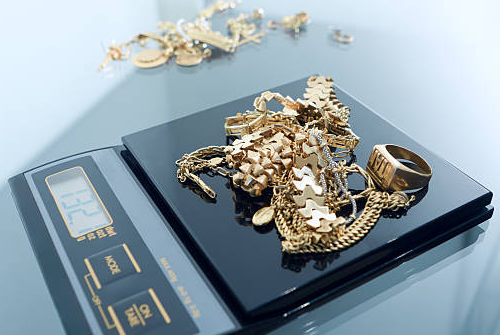
Gold, with its enduring allure and intrinsic value, has captivated individuals as a store of wealth for centuries. If you possess gold in any form, whether it be jewelry, coins, or bars, understanding its value is crucial. Here is a comprehensive guide on how to determine the value of your gold, considering factors such as purity, weight, market prices, and professional appraisals. Armed with this knowledge, you can make informed decisions regarding your gold assets.
Assessing Gold Purity:
The purity of gold is measured in karats, with 24 karats representing pure gold. Determine the karat value of your gold item by examining any hallmarks or stamps. Common purity stamps include 24K, 18K, 14K, and 10K. If no stamp is present, consider seeking professional assistance to accurately determine the purity.
Weighing Your Gold:
Gold’s value is closely tied to its weight. Use a reliable and precise scale to weigh your gold item in grams or troy ounces. It is essential to note that the weight is measured without any stones or non-gold components.
Research Current Market Prices:
Gold prices fluctuate daily based on supply and demand factors. Stay updated with the current market prices by referring to reputable financial websites or consulting with a precious metals dealer. The market price will serve as a benchmark for evaluating the worth of your gold.
Calculating the Intrinsic Value:
Once you know the weight and purity of your gold, you can calculate its intrinsic value. Start by converting the weight into troy ounces if necessary (1 troy ounce equals 31.1 grams). Multiply the weight in troy ounces by the percentage of gold purity (karat) divided by 24. Finally, multiply this figure by the current market price per troy ounce to determine the intrinsic value of your gold.
Example: Take you have 14k gold ring weighting 7 grams and the current market price is $1980/ozt.
- 24k/14k = 58.5% gold.
- $1980 x .585 = $1158 per ozt for 14k gold.
- $1158 / 31.1 = $37.23 per gram for 14k gold
- $37.23 x 7 = $260.61
- Thats the value of your gold ring at 100% melt value.
Consider Numismatic or Collector Value:
Certain gold items, such as rare coins or limited-edition pieces, may possess additional value beyond their intrinsic gold worth. Numismatic or collector value depends on factors such as rarity, condition, historical significance, and collector demand. Conduct research or consult with numismatic experts to determine if your gold item carries any additional value.
Seek Professional Appraisal:
For accurate and comprehensive valuation, consider seeking a professional appraisal. Professional appraisers have expertise in assessing the worth of gold items based on various factors. They consider aspects such as craftsmanship, condition, historical significance, and market demand. An appraisal report from a reputable appraiser can provide you with a reliable estimate of your gold’s value.
Determining the value of your gold involves assessing its purity, weighing it accurately, researching current market prices, calculating the intrinsic value, considering numismatic or collector value, and, if needed, seeking professional appraisals. By following these steps, you can gain a comprehensive understanding of your gold’s worth. Remember that gold prices fluctuate, and market conditions can influence the value. Stay informed and periodically reassess the value of your gold assets to make informed decisions when buying, selling, or maintaining your gold holdings.
Request a Free Appraisal Kit from Gold to Cash to sell your gold for the most cash.